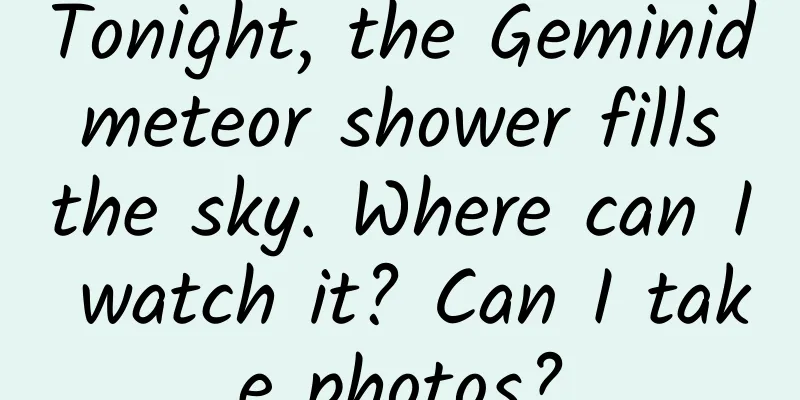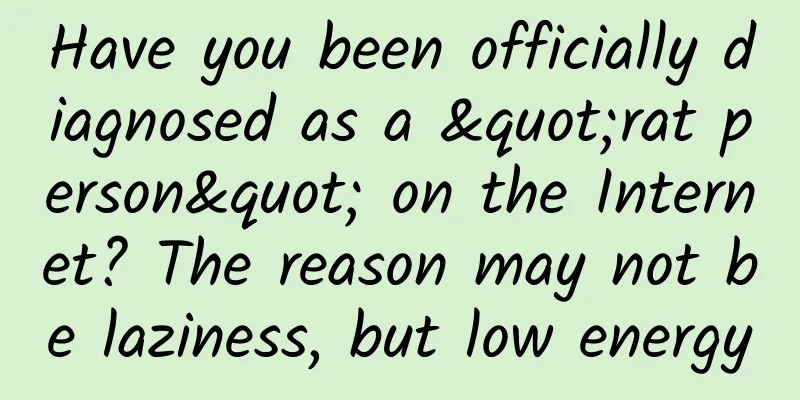Tonight, the Geminid meteor shower fills the sky. Where can I watch it? Can I take photos?

|
Tonight is the day of the annual Geminid meteor shower , which never disappoints. What time can you watch it? See the picture below↓ When can we watch the Geminid meteor shower in 2023? See the yellow text on the picture|EasyNight If you do what I say, you are guaranteed to see dozens or even hundreds of meteors. If you are a little luckier, you might even see a few dazzling fireballs. It’s the Gemini Rain at the end of the year again The Geminid meteor shower is active from December 7 to December 17 every year, and the peak period occurs around December 14 every year. Theoretically, more than 100 meteors can appear per hour at the peak, and in recent years, more than 150 meteors have often appeared . These meteors all look like they are shot out from the head of Gemini, hence the name Geminid meteor shower. The picture below was taken by me at the Xinglong Observatory of the National Astronomical Observatory in 2015. You can see that countless meteors seem to be shot out from the same position. Geminid meteor shower丨Photographer: Steed If we must trace the origin of these meteors, they may all come from the asteroid 3200 Phaethon . In the not too distant past, Phaethon had no idea what was going on and scattered a lot of dust around its orbit. Every year in early to mid-December, the Earth passes near Phaethon's orbit and hits the dust head-on . The dust enters the Earth's atmosphere and turns into a large amount of Gemini rain in a short period of time. Good weather and location for stargazing This year's Gemini rain will be extremely heavy and will occur tonight (December 14th) Beijing time. According to the forecast, the specific time will be around 3 a.m. However, for Gemini showers, the peak period can last for a whole day, so regardless of the exact time of the peak, from tomorrow night to the morning of the day after tomorrow is the best time to watch Gemini showers this year . In theory, in the second half of tomorrow night, there will be about 150 meteors per hour. Of course, the number of meteors mentioned above is the number of meteors that can be seen when all conditions are ideal. In fact, due to various restrictions, such as light pollution, obstructed vision, and differences in the location of the radiant point , the number of meteors you can see per hour is definitely less than the theoretical value. Because of this, if you want to enjoy the Geminid meteor shower, you have to stay away from light pollution in the city as much as possible and find a relatively dark and open place to wait. Normally, bright moonlight would be another unavoidable factor. However, this year, there is no need to worry about this. Tomorrow is the second day of the lunar calendar. Soon after sunset in the evening, a crescent moon will set, and there will be no moonlight interference throughout the night . Next year, the night of the Gemini shower will be almost full of moonlight, and the observation conditions will be much worse than this year. However, even if there is a big moon, the Gemini shower has been stable over the years, so you can still watch for meteors, but many faint meteors will not be visible. The picture below is the Gemini shower in 2013, which still has a good performance under the big moonlight. Meteors under the moonlight | Photo by Steed In addition, the unpredictable weather and the sudden drop in temperature may prevent you from enjoying this meteor shower. Please pay attention to the weather forecast and keep warm. In short, if the weather is good where you are now, take action quickly! According to the national precipitation forecast released by the Central Meteorological Observatory, there will be widespread rain and snow across the country on the day of the Gemini rainstorm. So, if it is sunny where you are, you must be very lucky! | Central Meteorological Observatory How to watch meteor showers? Assuming the weather is good where you are, how should you observe this year's Geminid meteor shower? First, make adequate preparations for the cold weather Winter nights can be extremely cold, not to mention being outdoors, so no matter where you plan to observe, you must be well prepared for the cold. A thick scarf (to cover your face and nose), a hat (to cover the top of your head and ears), gloves, thermal underwear, and a cold-proof jacket are all essential. It is also best to have a thermos with some hot water. Things like warm baby packs are also very useful at this time. Second, choose the right location For meteor showers, just like stargazing, it is best to go out of the city to observe. Only by avoiding the strong light pollution in the city and in the darker night sky can you see as many meteors as possible. Where can you avoid light pollution? You can refer to the light pollution map. For example, as shown in the light pollution map around Beijing below, the darker the place on the map, the less light pollution there is, and the better the effect of stargazing and meteor showers. In addition, remember to find an open area with not too many obstructions around. According to experience, most meteors will appear near the horizon in the low sky. Light pollution map 3. Find a comfortable position and look up at the sky You can watch the meteor shower with your naked eyes , or with suitable glasses at most, but you don't need any telescope. Although the Geminid meteor shower radiates from the Gemini constellation, the time when the meteors appear and the direction in the sky are completely random. Therefore, even if you don't know the constellations at all and don't even know where Gemini is in the sky, it doesn't matter, just stare at a piece of sky and wait patiently . Under normal circumstances, from tomorrow night to the early morning of the day after tomorrow, in an environment without too much light pollution, you should see meteors falling almost every minute. Meteor showers are not like rain. A real meteor shower requires you to be patient enough to wait. You can never guess from which direction the next meteor will pass, or whether it will be a fireball that amazes the whole audience. A Beginner's Guide to Photographing Meteor Showers A meteor passes by our eyes in a flash, so how can we freeze the meteor in our photo album forever? As we said before, you can never predict where the next meteor will appear , so you certainly can't aim your camera at a certain meteor in advance. Secondly, most meteors pass by very fast , so fast that you don't have time to express your wishes, so fast that you don't have time to ask your companions to look up, and of course, so fast that you don't have time to wait until you see the meteor before pressing the shutter . Therefore, if you want to photograph a meteor, you need to "wait for the rabbit". And you never know whether the "tree" you are waiting for will be able to wait for the "rabbit". Next, please check out Schrödinger's meteor photography tutorial. Before talking about meteors, let's talk about the starry sky. Because the starry sky is too dim for the camera's photoreceptor, we need to extend the camera's exposure time , let the camera stare at one place and keep looking, so that more light sources are continuously projected onto the photoreceptor, so that we can take a clearer picture of the starry sky. Most mobile phones on the market can even support long exposure shooting of the starry sky, but for shooting meteors, mobile phones are still inadequate. It is more appropriate to use professional digital cameras for such a hard job of waiting for the best. The starry sky photographed by a mobile phone, device vivo s15, iso1600, f1.8, exposure time 20s|Photographer: Mamenchisaurus Keeper 1. Photograph a shooting star The method of waiting for a meteor to appear is to keep the camera pointed at a certain area of the night sky and keep exposing the camera continuously until a meteor with its tail passes through the camera lens. The equipment and parameter settings are similar to those for shooting the starry sky. First, we need a SLR/mirror camera, a tripod, and a shutter cable . Set up the camera and point it in any direction, then adjust the camera to manual mode (M mode), focus on the starry sky, and then adjust the parameters. The following parameters are for reference only and need to be adjusted according to actual conditions. Set the aperture to the maximum (the smallest numerically, taking f1.8 as an example), set the ISO to above 6400, and set the exposure time (shutter speed) to more than 6 seconds. After adjusting the parameters, use the shutter cable to control the camera to take continuous photos. Among hundreds of photos, there will always be one photo that can capture the image of a meteor. A meteor suddenly flew into the camera. Equipment: Canon 6D, Sigma 35mmF1.4, exposure time 6 seconds, ISO6400|Photographer: Mamenchisaurus Keeper 2. Photograph a sky full of meteors Stars fall like rain|Photography: Steed This type of photo is also often mistaken by beginners as a photo of meteors raining down. In fact, the meteors in the photo are usually all the meteors captured in a whole night . All the meteors are selected, and after aligning the background starry sky points, they are combined into a background photo using a mask cutout method, giving people a feeling of falling stars like rain. In fact, behind the photo are several hours or even nights of waiting, and post-processing that is very hard. Meteors superimposed throughout the night | Photo: Mamenchisaurus Keeper When photographing meteor showers, there is a very strange phenomenon that has always troubled many star photographers: wherever the camera is pointed, there will be no meteors . Although it is possible that meteors may appear in various places throughout the day, the result is that the camera is facing the east and shooting, and the meteors are falling in the west. Not giving up, I turned the camera to the west, and a huge bright fireball streaked across the night sky in the east... In fact, if you go out to watch meteors tomorrow night, whether you observe or take photos, just find a favorite area of the sky and wait patiently. There will always be a meteor that belongs to you. And when a bright fireball falls in front of your eyes with a tail of fire, believe me, you will feel that waiting for this night in the cold night is worth it! Author: Steed, Mamenchisaurus Keeper Editor: Li Xiaokui, Heijiomeimei Cover photo source: Steed This article comes from the Species Calendar, welcome to forward |
>>: Sailing to the West and defeating Japanese pirates, how powerful was the Millennium Fuchuan?
Recommend
How to design a brand advertising poster? 3 tips to solve your problems!
What are the design and creative techniques for l...
What impact does collective narcissism have on society?
© Caravaggio/The Atlantic Leviathan Press: I pers...
Messi wins the World Cup! It turns out that the 22 players on the field are not playing with the same ball?
Audit expert: Liu Yuhang PhD, Beijing Internation...
3 questions to ask in the early stages of product operation
The core goal in the initial stage of operation i...
Service registration and discovery based on Zookeeper
background Most systems start with a single syste...
How much does it cost to be a Shenzhen meat and poultry mini program agent?
Why should you be an agent for WeChat Mini Progra...
Green bean soup turns red and is on the hot search again. 3 factors will affect the color of the soup. 3 methods to teach you how to make green green bean soup
The topic of mung bean soup turning red has once ...
Mobile technology for the masses: words and gestures from the Overheard Word
[[120670]] Programmatically integrate third-party...
Do all airplanes look the same? Actually, they are very different.
Compared to the 1950s and 1960s, when there were ...
Don't be fooled! Teach you how to distinguish an official refurbished iPhone
Apple’s official refurbished phones are about to ...
60-day SEO training course to build millions of traffic
This course is suitable for practitioners who hav...
Breaking the high temperature record for 13 consecutive months, what have we experienced in 2024
2024 is already in the past. In the past year, we...
“Clothing can be antibacterial and antiviral”, is it really effective or just a waste of money?
After experiencing the COVID-19 pandemic, consume...
The four minefields of planting grass on Xiaohongshu!
In the era of big data, more and more brand blogg...
He committed a crime but acted as if nothing had happened. Can a lie detector expose his excellent acting skills?
Tang Yicheng In the fairy tale, Pinocchio's n...









